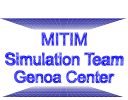EMSS 2011 Proceeding
Side Differences in Mri-Scans In Facial Palsy: 3-D Modelling, Segmentation And Voxel Gradient Changes
Authors: Paolo Gargiulo, Carsten Michael Klingner, Egill A. Frigeirsson, Hartmut Peter Burmeister, Gerd Fabian Volk, Orlando Guntinas-Lichius
Abstract
In this paper, we describe a method to analyze facial muscles and display structural changes occurring under normal and pathological conditions from segmented MR images. Orbicularis oculi and zygomaticus muscles are isolated from the surrounding tissues and their gray values analyzed. We use 3 Tesla magnetic resonance imaging (MRI) and special image processing tools to produce high quality images and 3-D models of human heads from patients suffering from peripheral facial palsy as well as from healthy probands. Although peripheral facial palsy is the most common pathology of the cranial nerves with an incidence ranging from 20 to 30 cases per 100,000 people, only a minority of the patients need a far-reaching surgical treatment. A profound diagnostic is essential before deciding for a drastic reconstructive surgery of the face due to the large variety of surgical techniques. This does not only include the classification of the etiology but also of the degree and distributions of the damage of the nerve and of the effected muscles are essential. Thus, we propose a method to segment and analyze facial muscles from MR data, and to distinguish palsy and normal facial side by measuring local gray values and calculating gradient distributions.
 2011
2011








































